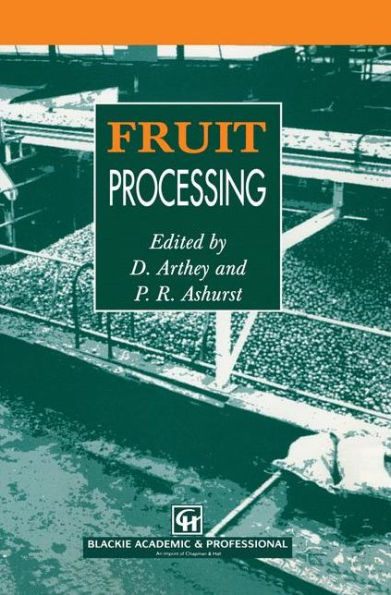Fruit Processing
Fruit and fruit products, in all their many varieties and variations, are major world commodities and part of the economic life blood of many countries, particularly in the developing world. The perception of the healthy nature of fruit is a major reason for its increased consumption in the developed world, and many consumers today find a wider selection of fruit varieties, available at all times of the year, than ever before. This volume, however, is not so much concerned with fresh fruit as those principal areas of processing to which it may be subjected. Fruit processing arose as a means of utilising a short-lived product and preserving its essential nutritional qualities as far as possible. A chapter on the nutritional aspects of fruit is included in this work to reflect the importance of this topic to most consumers. After a general introduction, the chapter on fruit storage is the only contribution which deals with a process from which fruit emerges in essentially the same physical condition. Beyond that the book sets out to cover most of the major areas in which fruit may be processed into forms which bear varying semblances to the original raw material.
1101515137
Fruit Processing
Fruit and fruit products, in all their many varieties and variations, are major world commodities and part of the economic life blood of many countries, particularly in the developing world. The perception of the healthy nature of fruit is a major reason for its increased consumption in the developed world, and many consumers today find a wider selection of fruit varieties, available at all times of the year, than ever before. This volume, however, is not so much concerned with fresh fruit as those principal areas of processing to which it may be subjected. Fruit processing arose as a means of utilising a short-lived product and preserving its essential nutritional qualities as far as possible. A chapter on the nutritional aspects of fruit is included in this work to reflect the importance of this topic to most consumers. After a general introduction, the chapter on fruit storage is the only contribution which deals with a process from which fruit emerges in essentially the same physical condition. Beyond that the book sets out to cover most of the major areas in which fruit may be processed into forms which bear varying semblances to the original raw material.
169.99
In Stock
5
1

Fruit Processing
248
Fruit Processing
248Hardcover(1996)
$169.99
169.99
In Stock

Product Details
| ISBN-13: | 9780751400397 |
|---|---|
| Publisher: | Springer US |
| Publication date: | 12/31/1995 |
| Edition description: | 1996 |
| Pages: | 248 |
| Product dimensions: | 6.10(w) x 9.25(h) x 0.02(d) |
From the B&N Reads Blog
